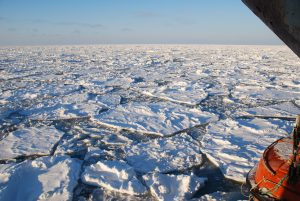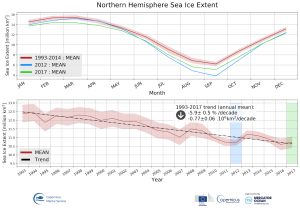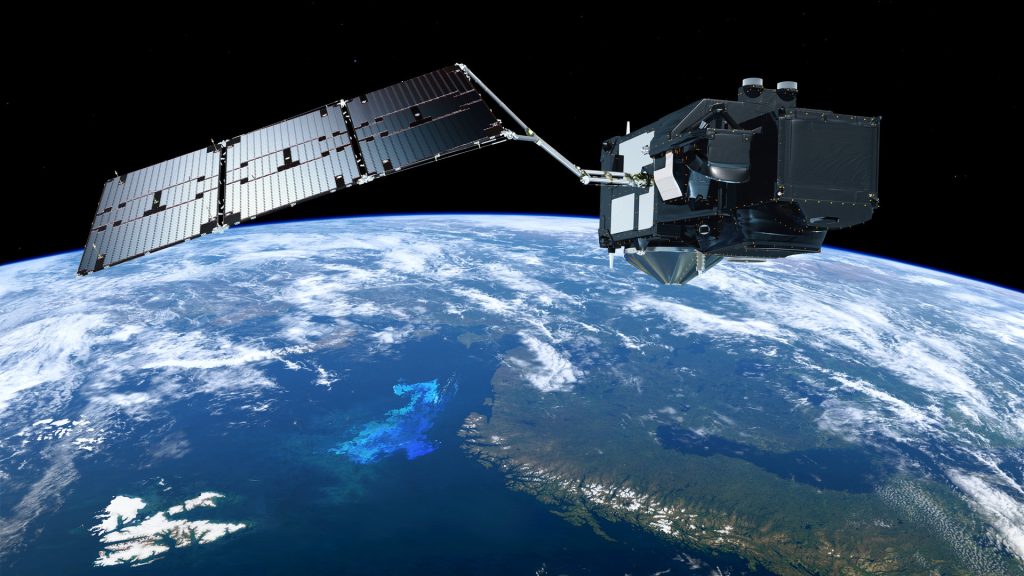Sea ice from space – Investigating Arctic sea ice and its connection to climate
In this set of three activities, students will investigate Arctic sea ice. First, they will perform a hands-on activity to find out what happens ‘when the ocean freezes’. Then, they will use satellite images to analyse the sea ice concentration and extent and how these parameters have changed in the last decades. They will learn where in the world it is possible to find sea ice and analyse up-to-date and long-term satellite data about sea ice concentration in the Arctic. This activity deals with one of the most important indicators scientists have to study climate change and its possible consequences.
Subject Geography, Science
- Learn what sea ice is and where it can be found on Earth
- Understand the importance of sea ice and its relation to Earth’s climate
- Understand how human actions and physical processes interact to influence and change landscapes environments, and the climate
- Use tools available on the internet to collect and analyse satellite data
- Understand how Earth observation satellites can be used to characterise and monitor sea ice
- Student worksheet for each group
- Two 250 ml jars or cups
- Teaspoon
- Tray
- Measuring jar
- Table salt
- Food colouring


Did you know?
Sea level is a very sensitive index of climate change. In ice form, sea ice is already contributing its volume to the oceans. Thus when it melts it does not increase the volume of the oceans. However, melting sea ice changes ocean salinity, affecting ocean currents and therefore the global climate system. Melting land ice such as glaciers and ice caps, on the other hand, contribute to the volume of the ocean and rising sea levels. With a focus towards oceans, the Copernicus Sentinel-3 satellite can measure and monitor changes in sea level. This information is essential to understanding our climate as well as the risks to coastal areas vulnerable to rising sea level.

The Magic of Light – Using spectroscopes and colour wheels to study the properties of light
Brief description In this set of eight activities, pupils work individually or in groups to build a spectroscope that can...
Highways of the Oceans – Sea currents and the connection to climate
Brief description In this set of three activities, students will use an multimedia module to learn about sea currents, the...
The greenhouse effect and its consequences – Investigating global warming
Brief description In this set of three activities, students will do hands-on experiments and learn how to interpret satellite images...
Paxi explores ice
Brief description:Join Paxi on an adventure to the North and South poles, to learn more about ice and its role...


